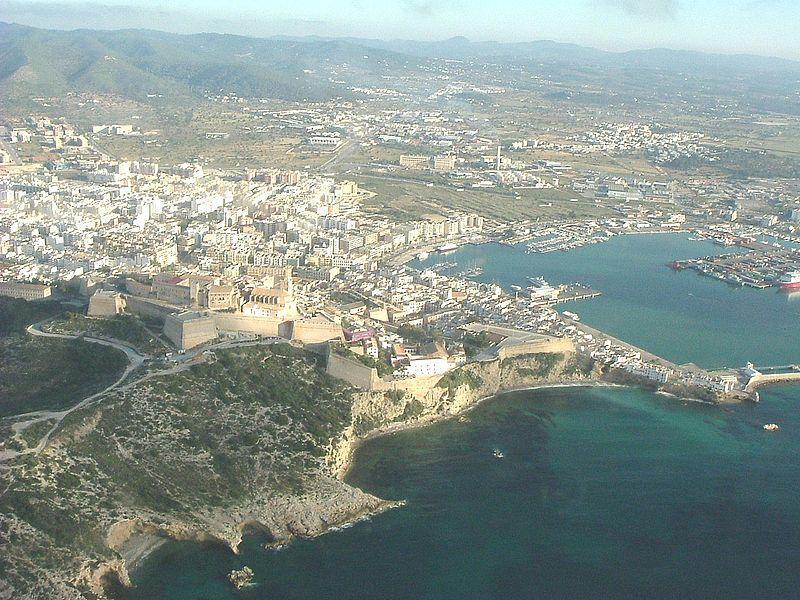Ibiza, Ibiza, Spain
Suggest Place to Visit
4458
Track to location with GPS |
 |
Prehistory and Ancient Age
Prehistoric sites have been found both on the island of Ibiza (Ses Fontanelles) and its younger sister Formentera (Ca na Costa) that prove its population from 2000 to 1600 BC. The island of Ibiza preserves Phoenician archaeological remains, as it was a relevant commercial enclave within the nautical culture of this town. Both in the route from east to west and vice versa, the island was a favorable crossing point for sailors through the prevailing winds and currents of the Mediterranean Sea. Approximately in the middle of the 8th century BC. The first stable settlement is founded in the S-W area, the Sa Caleta deposit, which will be occupied until the end of the same century when it will be abandoned. The fate of the settlers who could find these Phoenician sailors is unknown, but for all intents and purposes they disappear as their own entity.
At approximately the same time, the city of Ibiza began to be developed, in the same location as the current city, mainly due to its large port, much larger than the current one and to the situation on a small hill about 100 m above the sea level. Between the VII century a. C. and for an indeterminate moment, the island will remain within the orbit of the Canaanite polis of the Middle East until its conquest by the Assyrians and Qart Hadasht (Carthage), then until its destruction by the Romans in 146 BC. C.
The extensive occupation of the island will increase its production and wealth of products until it is named by Roman historians for its wool, wines and salt. Proof of its economic boom are the own coinage made on the island since the end of the 4th century BC. C. with the symbol of the island, the god Bes, who is named e 660; ybšm (<e 1488; e 1497; e 1489; e 1513; e 1501;> = e 660; iboshim, ´isla de Beš´), syncretism of the Egyptian god of fraternal fertility. Also a good example of this boom is the founding in Mallorca of a series of economic settlements in the southern area near the salt flats for their use, as well as economic relations with the islanders of the Talayotic culture. Ibiza appears already during the Second Punic War besieged and devastated by the Scipios brothers after their victory in Cesse. Abandoned, without being taken the city, by the Romans who believe that a Carthaginian fleet is on the way. It appears again mentioned as the last city loyal to Carthage when the Punic general Magon flees to it after being rejected by Gadir / Cádiz. Magón rearms in Ibiza and goes to Menorca to recruit mercenaries and found Mahón. Ibiza soon becomes pragmatic and freely surrenders to the Romans, allowing it to maintain its social systems and Punic culture well into the Roman principality. It is at this time that Ibiza is also known as ´´Iínsula Augusta´´ in continuity to its sacred Phoenician name of Island of Bes. It does not take long to receive the status of Roman municipality which gives it greater rights. This however could not stop the slow decline of this port and island. After the election of Tarraco / Tarragona as capital of the province of Tarraconesis, the marine traffic changes and begins to take routes closer to the recently conquered Mallorca (123 BC).
The Romans also traded with the Balearic Islands, which possessed certain wealth such as salt, figs or mineral extraction (galena-argentiferous and minium mines in s´Argentera - San Carlos). <e 1488; e 1497; e 1489; e 1513; e 1501;> e 660; ybšm (pronunciation reconstructed as [e 660; ibo e 643; im]) was the name given by the Phoenicians, [1] and Ebusus its adaptation to Latin. Along with Formentera it is known as the Pitiusas Islands, due to the abundant presence of pines of three different kinds. While less culturally developed tribes with barbarian traditions inhabited the larger islands in the eyes of Hellenistic culture, in the Pitiusas lived people of Semitic tradition, descendants of immigrants from the Middle East, Qart Hadasht or the Semitic polis from the south of the Iberian Peninsula . The reason for putting this name to the islands could only be that of not calling them ´´islas de los cananeos´´, which would mark the belonging to this orbit, since pines, to which tradition gives the name, there are so many or more in Mallorca and Menorca as in the Pitiusas.
Middle Ages [edit]
Aerial view of the capital and its castle in Dalt Vila.
After the Vandal and Byzantine occupations (6th - 8th centuries), the Balearic Islands, including Ibiza, fell into a stage of anarchy. The Arabs took possession of their territory in 902 and settled in the city that today survives as the capital, the old part of which is called Dalt Vila (upper city). New Berber settlers arrive on the island, joining the local population, most of whom convert to Islam. Jaime I of Aragon granted the reconquest of the Pitiusas Islands, belonging at that time to the Taifa of Denia, to the elected Archbishop of Tarragona, Guillermo de Montgrí, who was associated with the Count of Roussillon, Nunó Sanç, and with the Infante Pedro de Portugal for the endeavor. The Catalan troops occupied the castle of Ibiza on August 8, 1235; on the other hand, the Can Pere Lluch house resisted the offensive. The indigenous Muslim population was then mostly deported, as happened in Mallorca and the Levant, and new Christian settlers were brought in from Gerona. Ibiza was incorporated into the newly founded Kingdom of Mallorca, within the Crown of Aragon. The kingdom of Mallorca would not have Cortes, so the king of Mallorca would have to go to those of Catalonia to pay homage to the king.
It is located about 79 km east of the Iberian Peninsula, opposite Denia, 140 km southwest of the island of Mallorca, and north of Formentera, with coordinates 38.98 ° N 1.43 ° E. Its capital is Ibiza, (Eivissa, in Catalan) and the two most important towns, in addition to the capital, are San Antonio de Portmany and Santa Eulalia del Río and the largest municipality, San José.
The islands of Ibiza and Formentera are called the Pitiusas Islands, they form an archipelago different from the one made up of Mallorca and Menorca, although today they speak of the Balearic Archipelago and are part of the same administrative unit. It occupies an area of 570 km² and only one river runs through it, that of Santa Eulalia del Río, the only river in the Balearic Islands, which for many years has remained dry due to the excessive exploitation of the island's water resources.
85.64 km² of Ibiza are part of the World Heritage Site called "Ibiza, Biodiversity and Culture", declared by Unesco in 1999. It is a place of mixed character, that is, both cultural and natural. According to the world organization,
Ibiza provides an excellent example of the interaction between marine and coastal ecosystems. The dense meadows of Posidonia oceanica (seagrass), an important endemic species found only in the Mediterranean basin, contain and support a diversity of marine life. Ibiza preserves considerable evidence of its long history. The archaeological sites of Sa Caleta (settlement) and Puig des Molins (necropolis) testify to the important role that the island had in the Mediterranean economy in protohistory, particularly during the Phoenician-Carthaginian period. The fortified Upper Town (Alta Vila) is an outstanding example of Renaissance military architecture; it had a profound influence on the development of fortifications in Spanish settlements in the New World. [1]
The Ses Salines Natural Park is part of this place. Best known for its sparkling beach.
In Ibiza we will be able to enjoy not only the magnificent beaches but also various leisure and aquatic centers, archaeological remains of world relevance, etc. A recreational and cultural offer that will satisfy the most varied tastes.
The fame that Ibiza has earned internationally as the island of nightlife is not a cliché. It is a reality that the visitor will be able to feel immediately, since the largest of the Pitiüses offers a unique and non-transferable atmosphere that gives it a very particular letter of authenticity. The night in Ibiza is different.
Historic buildings and constructions - Illes Balears
In Illes Balears we can travel to the splendor of other times by visiting fantastic urban or rural palatial houses, the latter known as possessions, prehistoric towns and other simple constructions that show the ingenuity of its inhabitants. [+]
Horse shows - Illes Balears
Feeling the excitement of horse racing is possible at the racetracks of Illes Balears. Enjoy this and other equestrian shows and discover the Balearic love for the horse world. [+]
Nature and fauna - Illes Balears
Nature lovers will find in Illes Balears opportunities to discover in detail the flora and fauna that surrounds us. Whether in a virgin state or in parks, there are multiple ways to spend the day in contact with nature.
Water parks - Illes Balears
The attractive beaches of the Balearic Islands are joined by the refreshing and fun water parks where the most unlikely water games come true. [+]
Caves - Illes Balears
Nature in the Balearic Islands offers us a spectacular beauty, not only in its landscapes but also ´under them´. Throughout the centuries the waters have sculpted fantastic formations that amaze visitors. [+]
Other attractions - Illes Balears
If something characterizes Illes Balears it is the variety of its offer for entertainment and fun. Here you will find other interesting opportunities to complement your stay.
Casinos - Illes Balears
Enjoying the night in the distinguished atmosphere of a casino is a good option throughout the year. Music, elegance and emotion to accompany the fortune that will undoubtedly smile on us.
A. López
Clubs - Illes Balears
The variety of styles of music and number of places to dance is very significant in Illes Balears. Some clubs on the islands are world famous, both for their spectacularity and for the professionalism of their DJs.
[
Comments
We don´t have yet any comments about:
Ibiza
Ibiza
Be the first to leave a comment as it is very important to inform other people
Outros locais a visitar
Within a radius of 20 km from:Ibiza
Ibiza, Cala Longa (praias de Ibiza) |
| 8,9 Km |
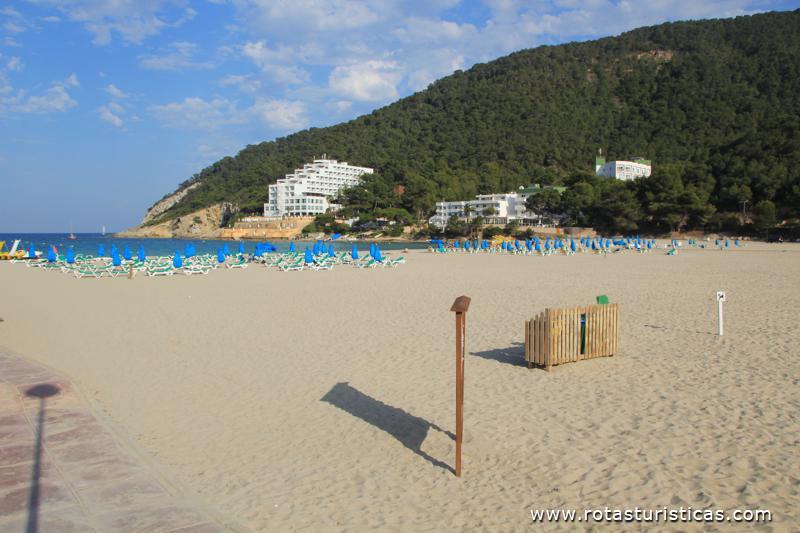 |
Ibiza, Cala Coral |
| 17,7 Km |
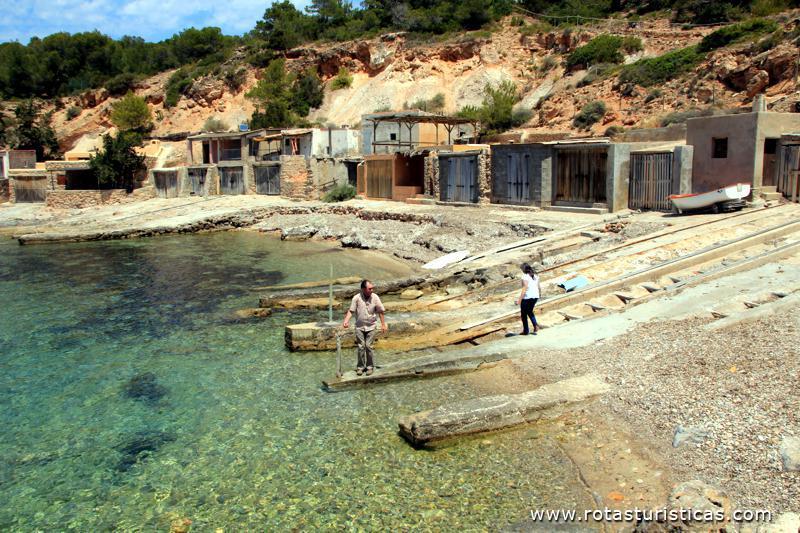 |
Ibiza, Cala De Hort (praias de Ibiza) |
| 18,1 Km |
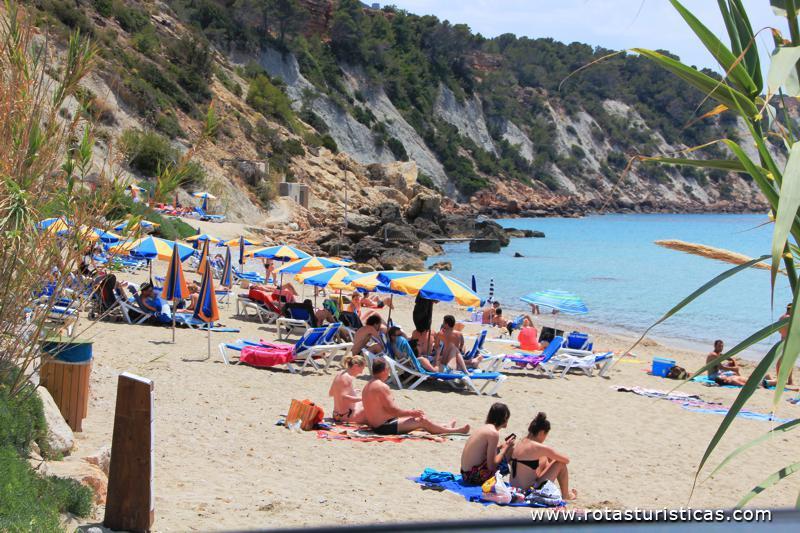 |
Ibiza, Cala Vadella (praias de Ibiza) |
| 18,3 Km |
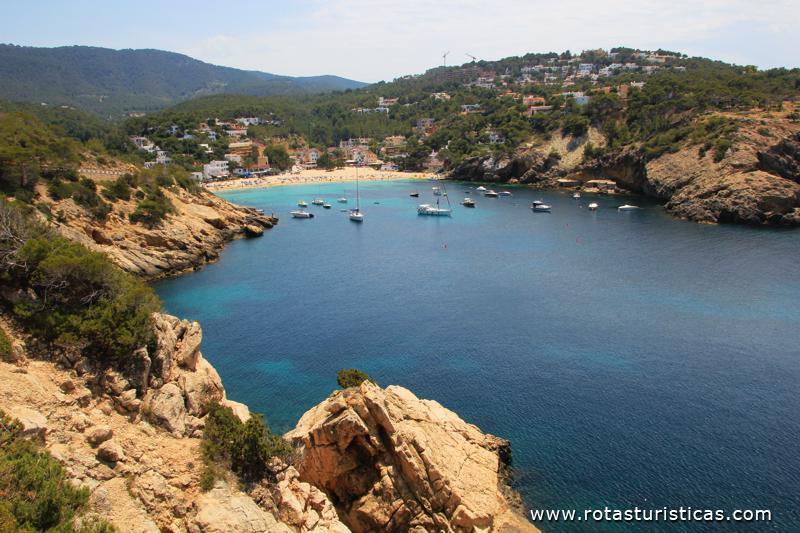 |
Passeios de barco na costa de Ibiza |
| 19,0 Km |
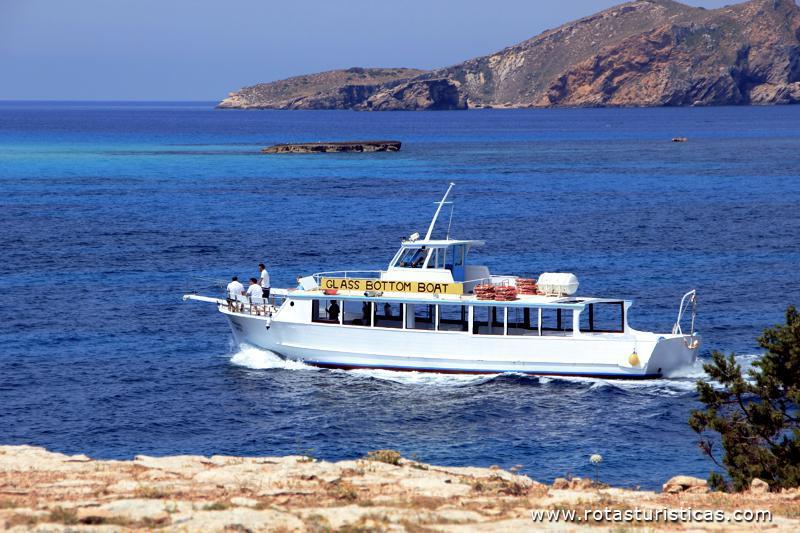 |
Ibiza, Paisagens de Cala Bassa |
| 19,0 Km |
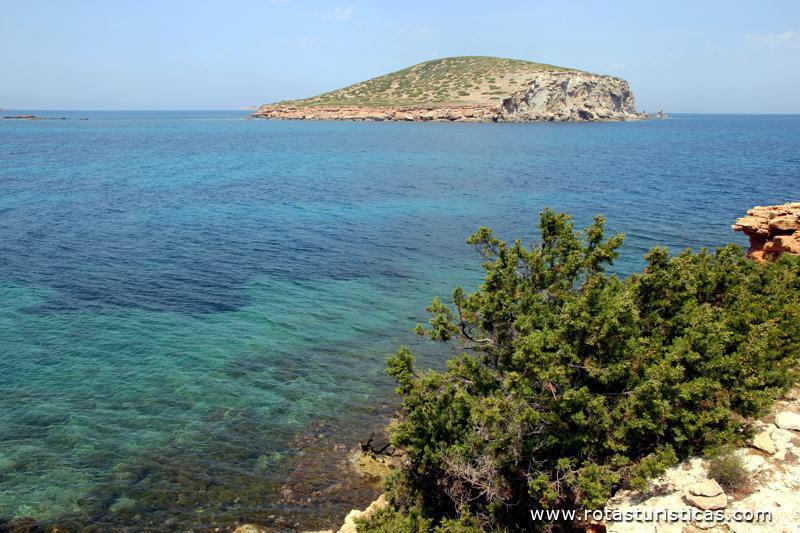 |
Ibiza, Cala Comte (paraíso para os amantes do naturismo/nudismo) |
| 19,3 Km |
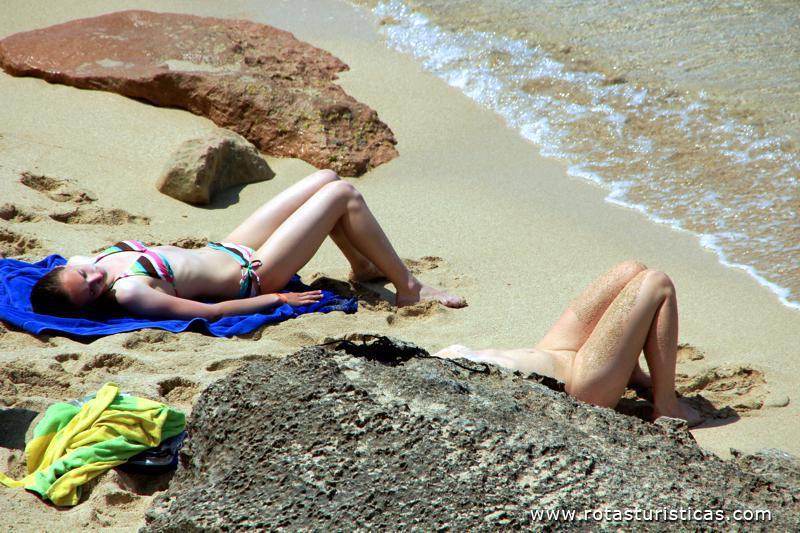 |
Ibiza, Cala Comte (Praia de Comte) |
| 19,3 Km |
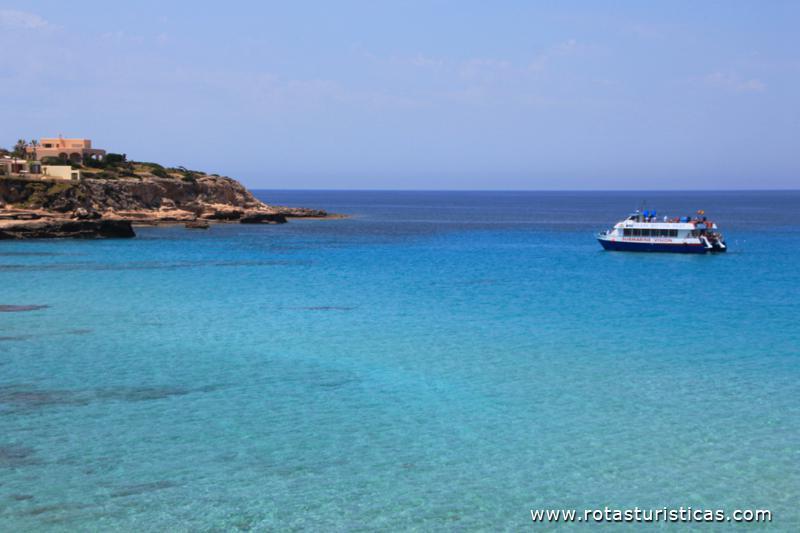 |
Hotel reservation near Ibiza within a radius of 20 km
Why to book with ROTAS TURISTICAS
The best prices
Our partnerships with the world´s largest operators offer research on the best market prices.
More options
At Rotas Turisticos you can book the hotel, buy the air ticket, book the transfer from the airport to the hotel and vice versa, book the local excursions, rent the car, take travel insurance and consult the places to visit and where to go.
Holiday Tips & Destinations
Hundreds of holiday destinations with all the options that allow you to easily choose the destination that best suits your dream vacation.
ROTAS TURISTICAS
Links


